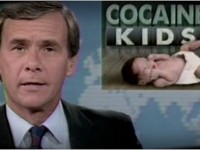
Er ist einer der umstrittensten Politiker in Kanada: Seit Rob Ford vor gut drei Jahren zum Bürgermeister von Toronto gewählt wurde, sorgt er für einen Skandal nach dem anderen. Er polarisiert mit rechten Parolen, liefert sich Prügeleien mit Journalisten und pflegt dubiose Freunde im Drogenmilieu. Im Frühjahr war er in ein handfesten Skandal um ein Video verwickelt, das ihn angeblich beim Rauchen einer Crack-Pfeife zeigte. Der schwergewichtige Bürgermeister aber trotzte allen Gegnern. Bis zuletzt regierte er die viertgrößte Stadt in Nordamerika mit harter Hand und schüttelte alle Vorwürfe ab. Auch weil außer zwei Journalisten lange niemand das angeblich kompromittierende Drogen-Video gesehen hatte. Selbst eine über Crowdfunding finanzierte Belohnung von 200.000 Dollar förderte die Aufnahmen nicht zu Tage. Viele Kanadier hatten den Skandal fast vergessen. Am Donnerstag dann der Paukenschlag: Auf einer Pressekonferenz berichtete Torontos Polizeichef Bill Blair völlig überraschend vom Fund des Drogen-Videos.

A crack epidemic was raging in Philadelphia in 1989 when Hallam Hurt, then chair of neonatology at Albert Einstein Medical Center on North Broad Street, began a study to evaluate the effects of in-utero cocaine exposure on babies. In maternity wards in Philadelphia and elsewhere, caregivers were seeing more mothers hooked on cheap, smokable crack cocaine. A 1989 study in Philadelphia found that nearly one in six newborns at city hospitals had mothers who tested positive for cocaine. Some social workers predicted a lost generation - kids with a host of learning and emotional deficits who would overwhelm school systems and not be able to hold a job or form meaningful relationships. The "crack baby" image became symbolic of bad mothering, and some cocaine-using mothers had their babies taken from them or, in a few cases, were arrested. The researchers consistently found no significant differences between the cocaine-exposed children and the controls. At age 4, for instance, the average IQ of the cocaine-exposed children was 79.0 and the average IQ for the nonexposed children was 81.9. Both numbers are well below the average of 90 to 109 for U.S. children in the same age group. When it came to school readiness at age 6, about 25 percent of children in each group scored in the abnormal range on tests for math and letter and word recognition. As the children grew, the researchers did many evaluations to tease out environmental factors that could be affecting their development. On the upside, they found that children being raised in a nurturing home - measured by such factors as caregiver warmth and affection and language stimulation - were doing better than kids in a less nurturing home. On the downside, they found that 81 percent of the children had seen someone arrested; 74 percent had heard gunshots; 35 percent had seen someone get shot; and 19 percent had seen a dead body outside - and the kids were only 7 years old at the time.

